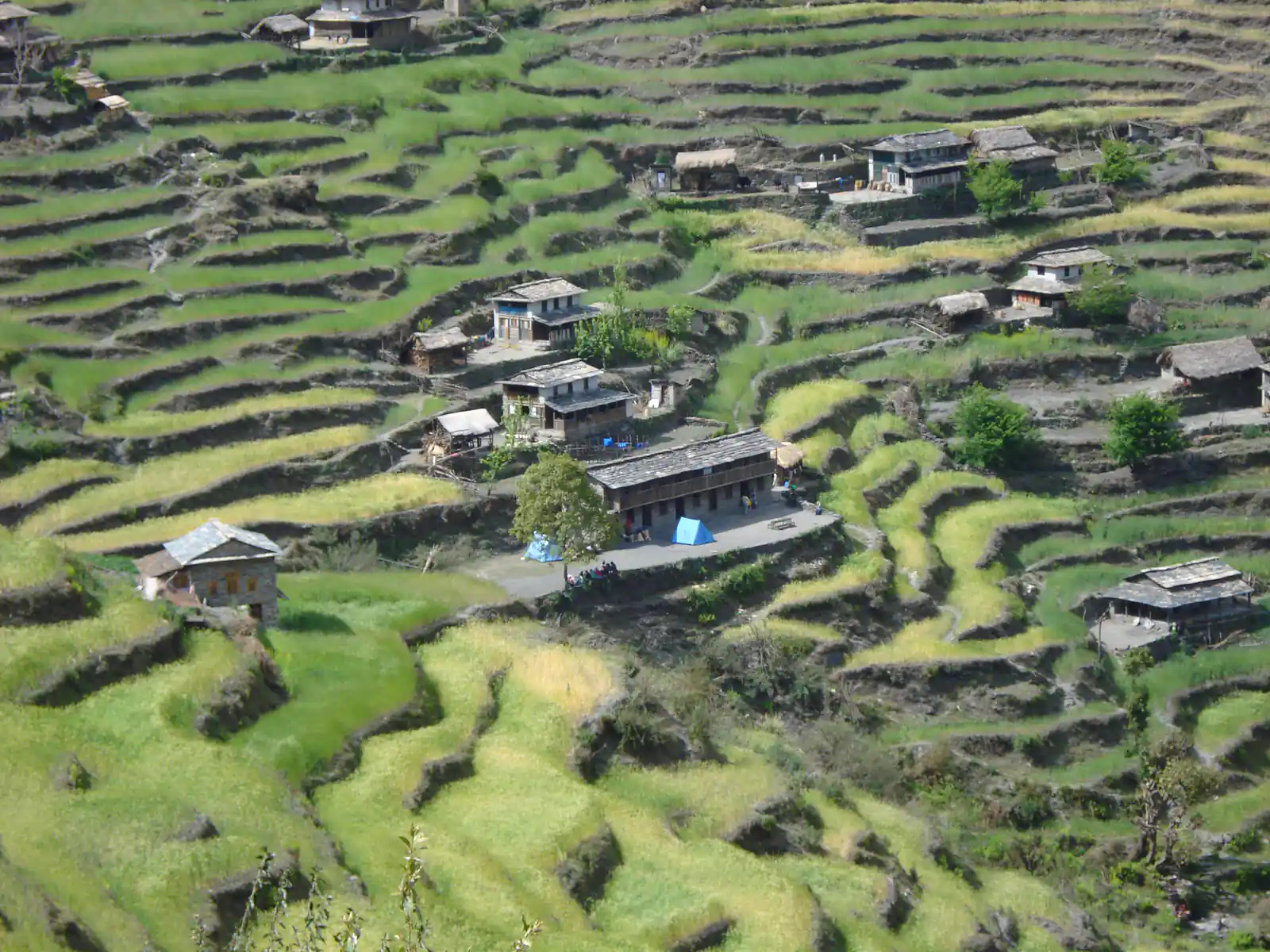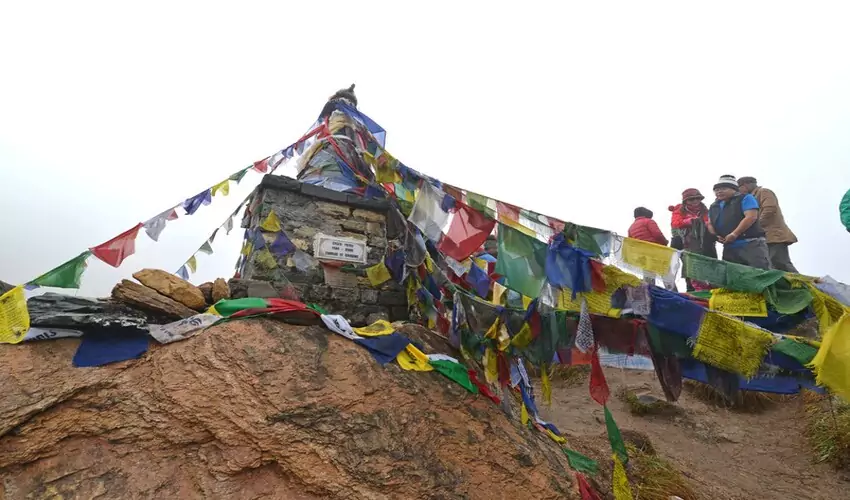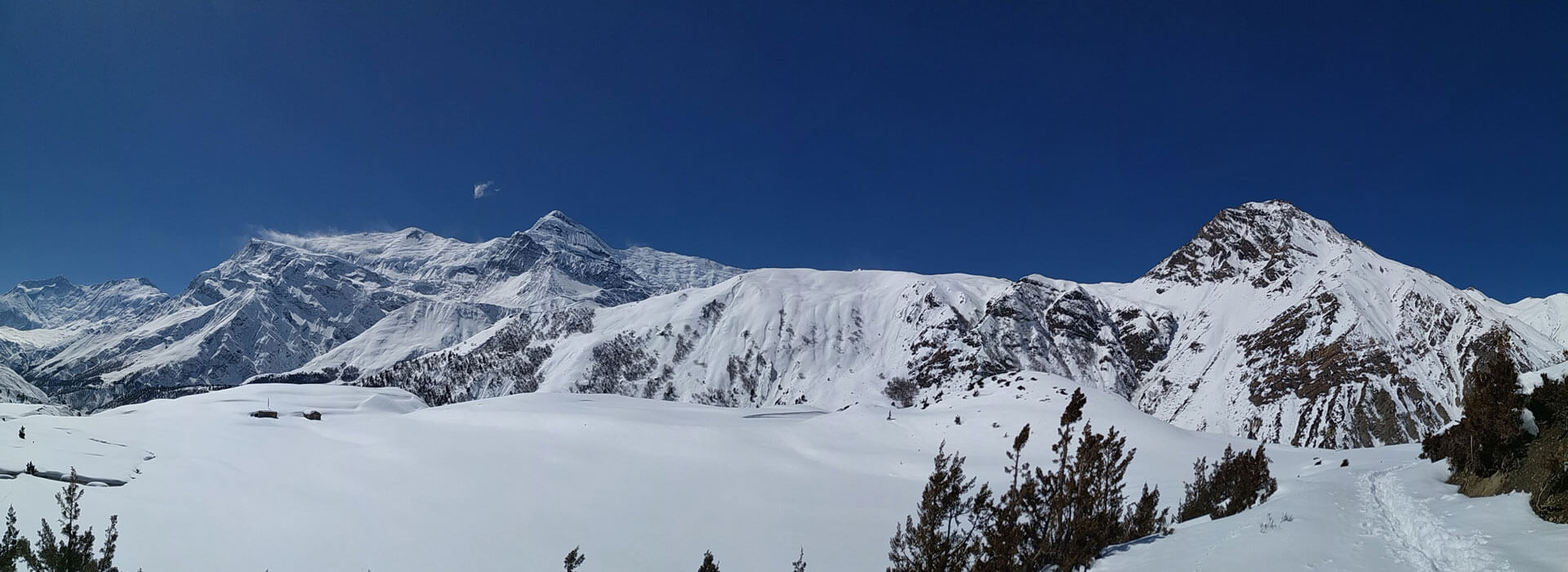Trekking around the Annapurna Circuit is considered one of the world’s best long-distance treks. Every year, thousands of trekkers flood into the Annapurna region to undertake the journey around the Annapurna Circuit.
The trek rewards the trekker with an awe-inspiring view of the Annapurna mountains, ever-changing landscapes, friendly and welcoming people, ancient religious sites, legendary high passes, etc. No wonder why Annapurna Circuit is on every trekker’s bucket list.
So, if you are planning to do the Annapurna Circuit Trek and would like to learn more about the Annapurna Circuit before booking the trekking trip or are confused with anything regarding the trek, here are the answers: some of the most frequent questions about it.
These questions pop into everybody’s head when they decide to do the Annapurna Circuit Trek. Let this be your essential guide to this incredible trek and an invitation for an adventure.

Top 10 Frequently Asked Questions about Annapurna Circuit Trek
1. Annapurna Circuit Trek Distance: How long is the trek?
The total distance of this Annapurna Trekking mostly depends on the trek’s starting point and endpoint; thus, the trail’s distance can range from 160 km to 260 km. This trek can be done in as few as ten days to 28 days if you decide to do the entire circuit with a few side trips.
Generally, it will take around 10 to 14 days if you go for a shorter version of the trek and 18-21 days for the entire circuit.
Some example routes:
- Besisahar to Nayapul (entire route) – 18 to 21 days
- Besisahar to Birenthanti – approx. 17 days
- Besisahar to Tatopani (then bus and jeep to Pokhara) approx. 15 days
- Besisahar to Jomsom (then a flight or jeep to Pokhara) – approx. 13 days
- Jagat to Tatopani – approx. 12 days
- Chame to Jomsom- approx. Ten days
2. When is the best time to go to Annapurna Circuit Trek?
Although you can do it at any time of the year, the best season for Annapurna Circuit Trekking is during autumn (September to November) and spring (March to May). During these seasons, the weather and temperature are just perfect for trekking. Days are bright and sunny with clear blue skies. Thus, you can enjoy some excellent views of the Annapurnas and Dhaulagiri peaks.
Be aware that even though it is not monsoon season, the weather will still be warmer and humid in the lower regions, and you may face some unforeseen rainfall. It will also be much more relaxed at a higher altitude (above 3500m). Hence, it is recommended to carry warm gear to tackle the cold at higher elevations.
Related Post
3. How challenging is the trek?
The Annapurna Circuit trek is moderately challenging in Nepal. That doesn’t mean that you have to be a professional athlete or experienced hiker to do this trek. You conquer this trek if you are physically fit and possess sound health. It would help if you had enough acclimatization and rest days before heading towards a higher elevation.
In the Annapurna Round Trek, you will hike through different terrain ranging from tropical grassland to snowy alpine terrains. The trail is full of rock steps, steep ascents, and descents full of loose rocks, and rivers crossing the trail in the most unexpected places, to name a few.
Furthermore, the trek will get much more complicated as you get to a higher altitude. So, take proper acclimatization and rest days.

4. Is there are risk of getting altitude sickness?
Since the Annapurna Circuit is a high-altitude trek that starts at 1000 m and takes you up to 5416m at Thorong La Pass, there is a risk of getting altitude sickness. Different people react differently to the altitude, no matter how fit or experienced hikers they are.
Thus, it would help if you learned about altitude sickness and what are its symptoms before hitting the trail. I recommend you consult with your local travel medicine specialist about altitude sickness, browse online, or attend one of the lectures organized in Kathmandu. Furthermore, keep yourself hydrated and take enough acclimatization and rest days to adjust to the altitude.
5. What is the accommodation in Annapurna Circuit Trek like?
Round Annapurna Trek is a famous teahouse trek in Nepal. So, finding accommodation along the trail won’t be a problem. However, pre-booking is recommended if you trek during the peak season.
Generally, the rooms in the teahouses are pretty basic and come with shared bathrooms. We will provide you with a blanket, but you may want to bring your sleeping bag as the nights can get very chilly and there is no heating system in the rooms. Plus, you must have food at the same lodge. Otherwise, you will not get the room.
6. How much money do I need?
2000 NPR (approx. US$20) per day should be fine for covering your room and three basic meals per day. If you want to splurge a bit more and buy some additional Snickers bars, have a continental meal for dinner, or drink hot chocolate, then think of spending up to 3000 NPR per day ($30).
Average prices:
- room for three – 350 NPR
- roll of toilet paper – 80 to 120 NPR
- oatmeal – 250 NPR
- Snickers bar – 150 to 350 NPR
- fried rice- 350 NPR
- Dal bhat – 400-600 NPR (don’t forget about free refills on this one!)
- Yak burger – 900 NPR
- Hot chocolate- 150 NPR
Keep in mind that the prices of food and accommodation get higher as you go higher in the elevation.

7. Where does the trek start, and where does it end?
The classic trekking route starts in Besisahar and ends in Nayapul. This may be the longer route, but it gives you enough time to acclimatize and enjoy the diverse landscapes and climate zones of the Annapurna Region and its rich cultural diversity.
However, if you have less time in hand, other options are to shorten the trek. Although the trek starts from Besisahar, you can drive up to Chame; it will lessen your trek by 1 to 2 days. After crossing the Thorong La pass, you can trek down to Jomsom and fly to Pokhara or take a local jeep or bus to Pokhara.
8. Do I need to obtain any trekking permits?
Yes. As the Annapurna region is inside the Annapurna Conservation Area, you will need the Annapurna Conservation Area Permit (ACAP) to enter the area. With ACAP, you will require a Trekker’s Information Management System Card (TIMS card). These Annapurna Trekking permits will cost you USD 23 each for an individual trekker.
You can get these permits from the Nepal Tourism Board (NTB) office in Kathmandu. You will require your passport and passport-sized photographs to apply for the permits.
9. Should I hire a guide/porter?
You can do Annapurna Circuit without a guide or a porter, but hiring a local guide and a porter is always good. Having an experienced guide makes your trek much more accessible as he will manage everything for you, and in addition, you will have more knowledge about the trek and the people.
And porters can ease the burden by carrying your stuff during the trek. If you have an existing medical condition such as back problems or bad knees, you should hire a porter.
However, if you plan to trek the Annapurna circuit without a guide, you need proper planning and preparation.
Furthermore, some people work both as a porter and a guide, so you can hire them to lower your Annapurna Circuit Trek cost.
Related Article

10. Is there Wi-Fi on the trek?
Since you will be in the high-altitude mountainous region, there won’t be Wi-Fi in many trail areas. However, some teahouses offer Wi-Fi for free or for a little charge. However, It is better not to rely on the internet and enjoy the serene beauty of the Annapurna Region.
Furthermore, I didn’t find the question you would like to ask, or your query has not been listed above; please feel free to contact us for any trip-related questions.
